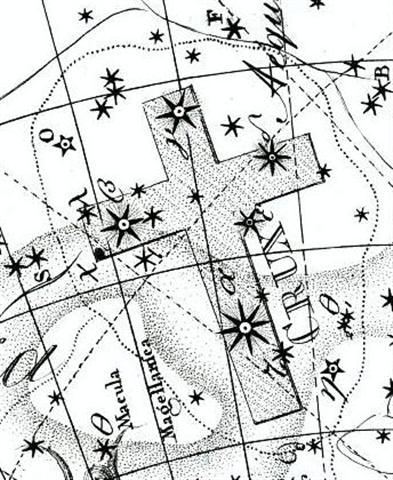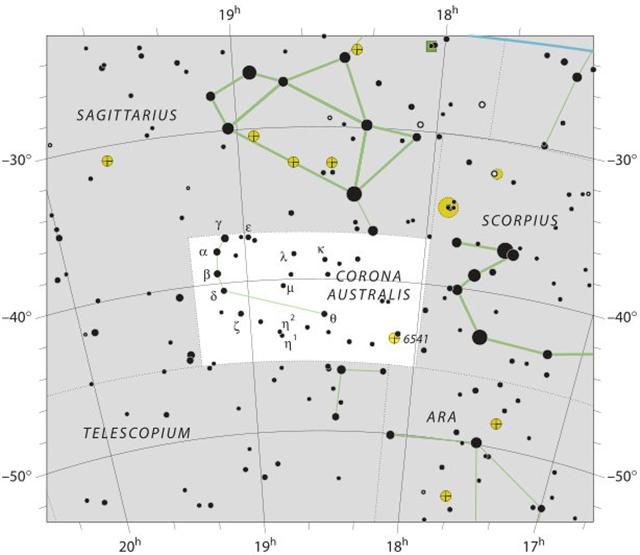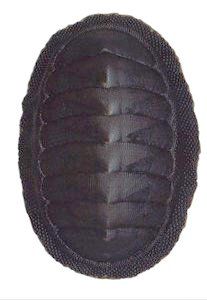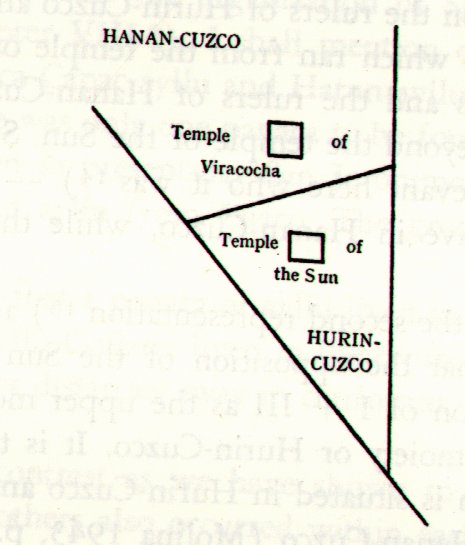At
the
time
of
rongorongo
the
distance
from
Sirius
to
Spica
was
half
that
from
0h
to
right
ascension
day
202.
In
March
21
the
Sun
was
at
Sirrah,
101
days
later
the
Sun
was
at
Sirius,
and
another
101
days
later
the
Sun
was
at
Spica:
 |
100 |
 |
100 |
 |
| Gb6-26 |
Ga2-7 (37) |
Ga5-28 (138) |
| 0h |
101 |
101 |
At
the
time
of
Haedus
II,
however, when
our
current
star
pictures
may
have
been
defined,
the
distance
from
Sirius
to
Spica
would
have
been
75
days
less
(due
to
the
proper
motion
of
Sirius)
and
with
only
26
days
from
Sirius
to
Spica:
| ●JUNE 29 |
SIRIUS (181) |
●JULY 1 (¤1) |
2 |
3 (*104) |
16 |
 |
 |
 |
 |
 |
| Ga5-1 (111) |
7 * 16 = 8 * 14 |
Ga5-3 |
Ga5-4 |
Ga5-5 |
| θ Crateris (175.0), υ Leonis (175.2), ω Virginis (175.3), ι Crateris (175.5) |
ο Hydrae (176.1) |
ζ Crateris, ξ Virginis (177.0), λ Muscae (177.1), ν Virginis (177.2), μ Muscae (177.8) |
Al Sarfah-10 / Uttara Phalguni-12 / Zibbat A.-16 / Shēpu-arkū sha-A-17 |
Phekda, β Hydrae (179.3), η Crateris (179.9) Deneb Cygni
|
| 93 Leonis (178.0), DENEBOLA (178.3), ALARAPH (178.6) |
| September 12 (255) |
16 * 16 |
14 (*177) |
15 |
16 (ф240) |
| NAKSHATRA DATES: |
| ●DECEMBER 29 |
30 (*284) |
31 |
●JANUARY 1 |
2 |
| λ Piscium (358.0), MANUS CATENATA (358.1), Alrai, θ Phoenicis (358.4), κ Andromedae (358.7) |
ω Aquarii (359.2) |
ψ Andromedae (360.1), σ Phoenicis (360.4) |
φ Pegasi (361.7) |
Dzaneb (362.4) |
| 3-14 |
March 15 |
16 (75) |
17 |
18 |
| ●JULY 20 (*121) |
21 |
7-22 (ф184) |
23 (204) |
24 |
25 |
26 (¤26) |
 |
 |
 |
 |
 |
 |
 |
| Ga5-22 |
Ga5-23 |
Ga5-24 |
Ga5-25 |
Ga5-26 (136) |
Ga5-27 |
Ga5-28 |
| JULY 31 (ф193) |
AUGUST 1 |
2 |
3 (*135) |
4 (216) |
5 |
6 |
| δ Muscae (196.5), Vindemiatrix (196.8) |
13h (197.8) |
APAMI-ATSA, ψ Hydrae (198.5) |
Al Dafīrah (199.4) |
σ Virginis (200.4) |
γ Hydrae (201.0), ι Centauri (201.4) |
Al Simāk-12 / Chitra-14 / Horn-1 / Sa-Sha-Shirū-19
ANA-ROTO |
| ξ¹ Centauri (197.1), ξ² Centauri (197.9) |
Mizar (202.4), SPICA, Alcor (202.7)
Sadalmelik
|
| October 3 |
4 |
5 |
6 (ф260) |
7 (280) |
8 |
9 |
| 'September 6 |
7 |
8 |
9 |
10 |
11 (254) |
12 (*175) |
| NAKSHATRA DATES: |
| ●JAN 19 (ф0) |
20 |
(386 = 2 * 193) |
22 |
23 |
24 |
25 |
| JANUARY 30 |
31 |
FEBRUARY 1 |
2 |
3 |
4 (400) |
5 (36) |
| no star listed (14) |
1h (15.2) |
Al Batn Al Hūt-26 / Revati-28 / 1-iku |
ν Phoenicis (17.4), κ Tucanae (17.6) |
no star listed (18) |
Adhil (19.3), θ Ceti (19.7) |
Ksora (20.1), ω Andromedae (20.6), γ Phoenicis (20.8) |
| β Phoenicis (15.1), υ Phoenicis, ι Tucanae (15.6), ζ Phoenicis, η Ceti (15.7) |
MIRACH, Keun Nan Mun (16.0), ANUNITUM (16.5), REVATI (16.9)
Regulus
|
| April 4 |
5 |
6 (ф77) |
7 |
8 (463) |
9 |
10 (100) |
| 'March 8 |
9 |
10 (ф50) |
11 |
12 (436) |
13 (72) |
π |
Surely Bayer did not assign Greek letters to his significant stars without much thought. First I found ω in the nakshatra sky of both ο Hydrae and Spica, and then I guessed he had used η in the nakshatra sky of both Sirrah and Sirius:
 |
100 |
 |
74 |
 |
25 |
 |
| Gb6-26 |
Ga2-7 (37) |
Ga5-2 (112) |
Ga5-28 (138) |
| SIRRAH |
SIRIUS |
ο HYDRAE |
SPICA |
| ο Virginis (182.1), η Crucis (182.5) |
Φ SAGITTARII (284.0), μ Cor. Austr. (284.6), η Cor. Austr., θ Pavonis (284.8) |
ω Aquarii |
Ksora (20.1), ω Andromedae (20.6), γ Phoenicis (20.8) |
| 0h |
101 |
101 |


The first of his Greek lettered stars in the Southern Cross was the good sign θ and the next star in the following day was given the letter η, both located in the quadrant below Pálida (δ). The same order was used in the Southern Crown, with θ rising before the twin stars η:
 |
 |
100 |
 |
74 |
 |
25 |
 |
| Gb6-25 |
Gb6-26 |
Ga2-7 (37) |
Ga5-2 (112) |
Ga5-28 (138) |
| θ Octantis |
SIRRAH |
SIRIUS |
ο HYDRAE |
SPICA |
| π Virginis (181.0), θ Crucis (181.5) |
ο Virginis (182.1), η Crucis (182.5) |
Φ SAGITTARII (284.0), μ Cor. Austr. (284.6), η Cor. Austr., θ Pavonis (284.8) |
ω Aquarii |
Ksora (20.1), ω Andromedae (20.6), γ Phoenicis (20.8) |
| 364 |
0h |
101 |
101 |
 |
 |
 |
 |
 |
| Ga1-30 |
Ga2-1 |
Ga2-2 |
Ga2-3 (33) |
Ga2-4 |
| Furud (94.9) |
Well-22 |
no star listed (96) |
β Monocerotis, ν Gemini (97.0) |
no star listed (98) |
| δ Columbae (95.2), TEJAT POSTERIOR, Mirzam (95.4), CANOPUS (95.6), ε Monocerotis (95.7), ψ1 Aurigae (95.9) |
| June 23 |
ST JOHN'S EVE |
25 |
26 (177) |
27 |
| Purva Ashadha-20 |
Kaus Borealis (279.3) |
ν Pavonis (280.4), κ Cor. Austr. (280.9) |
Abhijit-22 |
| KAUS MEDIUS, κ Lyrae (277.5), Tung Hae (277.7) |
KAUS AUSTRALIS (278.3), ξ Pavonis (278.4), Al Athfar (278.6) |
θ Cor. Austr. (281.0), VEGA (281.8) |
| December 23 (357) |
X-MAS EVE |
25 |
26 (360) |
27 |
| Egyptian courtyard |
 |
Phoenician heth |
 |
Greek eta |
Η (η) |
|
... The letter shape ultimately goes back to a hieroglyph for 'courtyard' ... possibly named hasir in the Middle Bronze Age alphabets, while the name goes rather back to hayt, the name reconstructed for a letter derived from a hieroglyph for 'thread'

|
Perhaps the courtyard was a symbol for 'inside' and for time zero. The Mayans used a sea shell for zero, for the time before the first unit was fully completed:


... A very detailed myth comes from the island of Nauru. In the beginning there was nothing but the sea, and above soared the Old-Spider. One day the Old-Spider found a giant clam, took it up, and tried to find if this object had any opening, but could find none. She tapped on it, and as it sounded hollow, she decided it was empty.
By repeating a charm, she opened the two shells and slipped inside. She could see nothing, because the sun and the moon did not then exist; and then, she could not stand up because there was not enough room in the shellfish. Constantly hunting about she at last found a snail. To endow it with power she placed it under her arm, lay down and slept for three days. Then she let it free, and still hunting about she found another snail bigger than the first one, and treated it in the same way. Then she said to the first snail: 'Can you open this room a little, so that we can sit down?' The snail said it could, and opened the shell a little.
Old-Spider then took the snail, placed it in the west of the shell, and made it into the moon. Then there was a little light, which allowed Old-Spider to see a big worm. At her request he opened the shell a little wider, and from the body of the worm flowed a salted sweat which collected in the lower half-shell and became the sea. Then he raised the upper half-shell very high, and it became the sky. Rigi, the worm, exhausted by this great effort, then died. Old-Spider then made the sun from the second snail, and placed it beside the lower half-shell, which became the earth ...
In
the
idiom
of
rongorongo
the
corresponding
sign
was
probably
the
mama
type
of
glyph,
e.g.
as
where
the
front
of
Leo
ended,
at
the
line
between
δ
(Zosma)
and
θ
(Coxa):
| ●JUNE 23 |
ST JOHN'S EVE (175) |
25 |
26 |
 |
 |
 |
 |
| Ga4-22 |
Ga4-23 |
Ga4-24 |
Ga4-25 (108) |
| JULY 4 (185) |
5 |
6 |
7 |
| Al Zubrah-9 / Purva Phalguni-11 |
Alula (170.5), Labrum (170.6) |
λ Crateris (171.6), ε Crateris (171.9) |
γ Crateris, π Centauri (172.0), κ Crateris (172.5) Gredi
|
| ZOSMA (169.2), COXA (169.4) |
| NAKSHATRA DATES: |
| ●DECEMBER 23 |
X-MAS EVE |
25 |
26 (360) |
| JANUARY 3 (368) |
4 |
5 |
6 |
| φ Aquarii (352.0), ψ Aquarii (352.4), χ Aquarii (352.6), γ Tucanae, φ Gruis (352.8) |
ο Cephei (353.3), Kerb (353.6) |
κ Piscium (354.2), θ Piscium (354.4), υ Pegasi (354.9) |
ο Gruis, Snowball Nebula (355.0) |

|
















